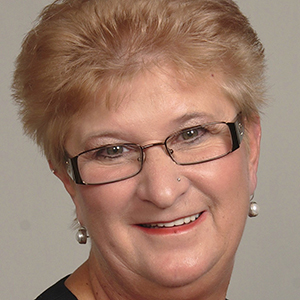

Written and reported by:
Catherine Ryan Gregory
Contributing writer
The world is changing at lightning speed—if you’re like most people, you sprint just to keep up to date with the news, pop culture, parenting advice, and the rest. One thing remains the same, though: People need healthcare.
In fact, the healthcare industry is growing rapidly to meet the increased needs of a population that is both living longer and dealing with chronic health conditions. This creates demand for providers like doctors and LPNs as well as behind-the-scenes workers, such as biller/coders. And now there are opportunities to build a billing and coding business at home.
Billers and coders work to ensure medical procedures are coded correctly so that healthcare providers are properly reimbursed by insurance companies and other payers. In many cases, billing and coding are done by one person, but some offices split them into two jobs. Either way, the work is immensely important to the healthcare field.
“Billing and coding professionals have a lot of responsibility to be accurate because the codes you use and how documentation is submitted affects the timeliness, efficiency, accuracy, and amount of payment,” says Nancy Szwydek, MPH, RN, RHIA, CRAT, CMAC, who is assistant dean for accreditation at Purdue University Global.
Why Now Could Be the Time to Start a Business
Many healthcare organizations are turning to independent, work-at-home medical billing and coding professionals instead of hiring, training, and retaining staff. This option can be appealing because the hospital or healthcare provider’s office doesn’t have to pay for biller/coders’ benefits, employee taxes, software, and other expenses of in-house billing and coding.
Starting a medical billing business at home is one exciting option in the field of medical records specialists. Here, we share what to consider before going this route and the steps to get your business up and running.
1. Assess your personality.
Running a medical billing and coding business at home takes focus, discipline, and persistence.
Like other at-home workers, billers and coders need to tune out household distractions, from the dishwasher that needs to be emptied to the neighbor who is constantly mowing the lawn.
What’s more, billers and coders need to be self-starters. They’ll do much of their work independently.
Finally, business owners do much more than just billing and coding. An entrepreneurial spirit and growth mindset helps them tackle the necessary tasks of running a business, from accounting to marketing.
2. Get trained.
There are many options for medical billing and coding schools and programs. Some programs take as little as four months; others are nine months to a year and earning a degree can take two years.
Your best bet is to “do your homework,” Szwydek says. “Research which professional credential, level of experience, or kind of education is most in demand in your area, then choose a program that meets those criteria.”
Online programs can give you the flexibility you need to manage education with other responsibilities, such as a job or family. Closely research a program’s coursework; for example, does it include anatomy and physiology, or do you have to learn those subjects separately?
Also, check to see if a program is accredited by a professional organization. Education can be a big expense: You want to make sure your investment is wise.
3. Get hands-on experience.
“Going from graduating from a program directly to starting your own business is an anomaly,” Szwydek says. “In this career, you learn as you go. Work experience is important.”
On-the-job experience and references from employers demonstrate to potential clients that they can trust you with such an important part of their business. After all, as a medical billing and coding professional, you’ll manage the reimbursement cycle: the process of understanding everything done during a healthcare visit, selecting the correct procedure and diagnosis codes, and submitting paperwork to insurance companies or patients.
“Billers and coders influence whether or not reimbursement is accepted or if providers get the whole amount they should be getting,” Szwydek says.
That takes a lot of skill. Coders go through provider notes and choose from among 10,000 procedure codes and 70,000 diagnosis codes to ensure correct reimbursement.
Since medical billers directly influence when and how much doctors get paid by insurance companies, you’re more likely to win clients once you have some practical experience. You’ll want to work for an organization, such as a hospital or physician’s office, before striking out on your own. Some billers and coders become specialists—in cardiology or dentistry, for example. This is done with on-the-job experience rather than niche certifications, Szwydek says.
But in general, certifications can boost the credentials of biller coders, whether they are specialists or generalists.
4. Write a business plan.
You wouldn’t set off on a road trip without directions—you wouldn’t know where you’d end up! A business plan acts as a loose set of directions, guiding you from the outset to your goals.
A good business plan starts with researching demand for your expertise, competition, the things that will make you stand out—for example, professional credentials—and if a niche market will help you grow. You’ll use this information to plan how your business can take advantage of opportunity and reduce risk.
Data from research helps you project and budget for the pace of onboarding work. For example, the data you find about demand and competitors might guide you to planning for one client in the first three months, then two in month four, and estimating from there.
When making projections, research how you will bill. (Start by looking into the most common practice among competitors.) Medical billers and coders tend to bill in one of three ways:
- Percentage:
- A set portion of the amount you collect (not bill)
- Per claim:
- A flat fee per claim you bill—anywhere from $3 to $10, depending on the type of claim and where you’re located
- Per hour:
- A rate providers pay for your documented working hours
When you consider whether you’ll work with a potential client, you may also want to research that organization. Find out how many patients it serves, how many claims it averages in a week, and the average monthly claim amount. Run the numbers to ensure the income from the job works for you.
5. Take stock of your financial resources.
Although a medical billing and coding business has less start-up overhead than other businesses, you still need capital, or funding, to begin.
It’s hard to generalize startup costs, as numbers vary depending on assets you already have and where you live. The most reliable way to estimate how much you need to start your business is to research each item or supply, then add them all up.
This can be a time-consuming step—but it’s well worth the effort. It’ll help you avoid being blindsided by an unforeseen cost or running out of funds before you’re off the ground. As you estimate, include these expenses:
Speaking of money, research how much of your income you will need to set aside for taxes. Once you are a business owner, you’ll be responsible for paying your own taxes, as opposed to an employer withholding them. Rates vary depending on your business structure, the state where you live, and how much income you generate. It’s a good idea to investigate a ballpark rate by asking others during networking events or consulting with a tax professional.
You’ll also need to pay for health insurance, unless you are covered by someone else’s insurance.
It’ll likely take time before you’re bringing in clients, and longer before you’re able to pay yourself a market salary for billers and coders. This is common in just about every field. The rule of thumb suggests saving enough to live on for six months before going all-in with your business.
6. Research the local market.
Determine if your local market is already saturated with similar businesses. An online search is a good place to start. Search “independent medical biller coder” or “outsource medical biller coder” plus your city, state, or region. The results will give you a sense of how saturated your local market is.
You can also research organizations that may want to outsource their billing and coding. These include nursing homes, assisted living facilities, and privately owned clinics. Offices that offer chiropractic, physical therapy, and mental health services are also good options.
7. Make sure your home is well suited to hosting a business.
You’ll need a room to use exclusively as a home office, for both productivity and privacy.
Working from home also requires a mindset shift for the worker and their family. The most successful billers and coders separate work life from home life, Szwydek says, so you’re not trying to do laundry or provide childcare while you’re on the clock.
Keep in mind that if you use a room exclusively for a business office, you can deduct a portion of your utilities as business expenses.
8. Apply for your business license.
Even before you apply for a business license, you’ll need to decide on your business structure (C corp, LLC, etc.). It’s best to consult an accountant and legal expert to choose the structure so you protect yourself and your business.
You’ll need to register your business with your state’s secretary of state. Businesses must register with the state before legally operating. The cost varies depending on where you live but expect to pay less than $300. This is usually a straightforward process of filling out online forms.
Next, visit the IRS website to apply for an employer identification number (EIN), which is like a Social Security Number for a business. You’ll need this number to file forms, buy business insurance, pay taxes, and more.
Finally, research if you need a specific business license where you live. Your local Small Business Association can help you determine this.
9. Start marketing your business.
Once you’ve completed the above steps, it’s time to implement your marketing strategy. To define this strategy, you should:
Consider these other approaches and put together a plan to gain clients:
You’re starting this business as a medical billing and coding professional, not as an expert marketer, so you may want to seek out additional support. SCORE and the Small Business Association (SBA) offer resources, training, and even mentorships, often for free.
10. Network
Networking with health care professionals is an excellent way to get in touch with organizations that would be thrilled to have billing and coding support. Think about networking interactions from the lens of how you can help them, not the other way around, to have the most success.
Here are a few ways to get started:
Join or stay in touch with professional organizations to stay on top of industry trends. They may also offer networking events, discussion boards, newsletters with helpful information, seminars, and conferences.
Further, some maintain job posting boards. While many of these postings are for employment—not clients looking for independent billers and coders—they’re still a wealth of information.
You can scroll through job boards to spot trends—for example, an uptick in demand for billers and coders in a certain type of medical office—and then use that insight for your own marketing and networking. Consider checking out these professional organizations.

With professional insight from:
Nancy Szwydek, MPH, RN, RHIA, CRAT, CMAC
Assistant Dean for Accreditation, Purdue University Global
You may also enjoy:



